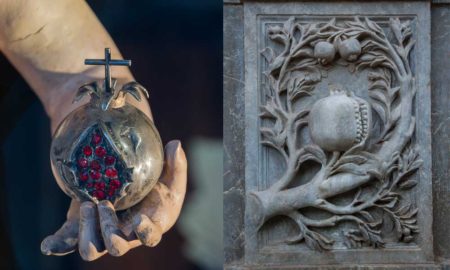- Aussie native vegetables on the menu. No Latin names, but Rhizowen Radix tell me: youlk = Platysace deflexa; kulyu = Ipomoea calobra.
- Another non-scientifically named plant is set to save the Amazon. Turns out it’s Ilex guayusa. Probably.
- World Bank to build genebank in Bolivia.
- World Coffee Research puts out nice variety catalogue.
- Our paper of a couple of years ago on globalized diets makes it to Scientific American and gets mashed up with the latest one.
- Purple patch for Purple Straw?
- Yes, you can garden clams.
Brainfood: Maize domestication, Eastern European grazing, Silk Road, Hybridization, European agroforestry, Japanese pears
- Recent demography drives changes in linked selection across the maize genome. Only a small part of teosinte contributed to maize.
- Changing year-round habitat use of extensively grazing cattle, sheep and pigs in East-Central Europe between 1940 and 2014: Consequences for conservation and policy. Animals don’t graze as much, or the same habitats, as they used to, which may not be altogether good for conservation of either plants or livestock because grazing was an important management intervention for thousands of years.
- Between China and South Asia: A Middle Asian corridor of crop dispersal and agricultural innovation in the Bronze Age. Wheat goes east, millets go west.
- Hybridization and extinction. Genetic swamping can happen, but hybridization can rescue a species too.
- Do European agroforestry systems enhance biodiversity and ecosystem services? A meta-analysis. Yes.
- Estimation of loss of genetic diversity in modern Japanese cultivars by comparison of diverse genetic resources in Asian pear (Pyrus spp.). The modern cultivars are variations on “Nijisseiki.”
Nibbles: Climate smart trifecta, Interdependence, Herbs trifecta, Rare breeds, Mexican maize, Ethiopian barley
- What the Pacific islands need to do about climate change. What, nothing about conserving and using crop diversity? My friends at CePaCT will be pissed.
- What West African farmers are doing about climate change.
- Yeah, I guess it’s not always and only about crop diversity. But would it kill them to mention it?
- And if you’re interested where the Pacific (and West Africa, and everywhere else) gets its food from…
- Peruvian black mint is a thing. But not a relative of coriander.
- Yaupon is also a thing. Though it won’t go far with that scientific name.
- Recreating a Renaissance herb garden. Because we can. Where’s the Peruvian black mint, though?
- Eat rare breeds to conserve them. Not rare advice.
- No wall can keep out landrace maize.
- Ethiopian beer gets a boost.
Pomegranate symbolism through the ages
Those of you that remember us agonizing about the minutae of agrobiodiversity iconography, to the extent of wondering if this
was indeed what it seemed to be, will rejoice with us that, with regards to pomegranates at least, we seem to have found the motherlode.

LATER: And then some.
LATER STILL: And then some more.
Nibbles: Agroecology, Seaweed, Groundnut genomes, Roman food, Nature
- It’s not the science, stupid.
- More kelp, sir?
- New genome promises
world dominationnon-allergenic peanut. - The diet of Roman soldiers in Glasgow could have been worse. But did they have take-out?
- There is no more Nature, capital N.